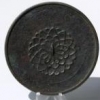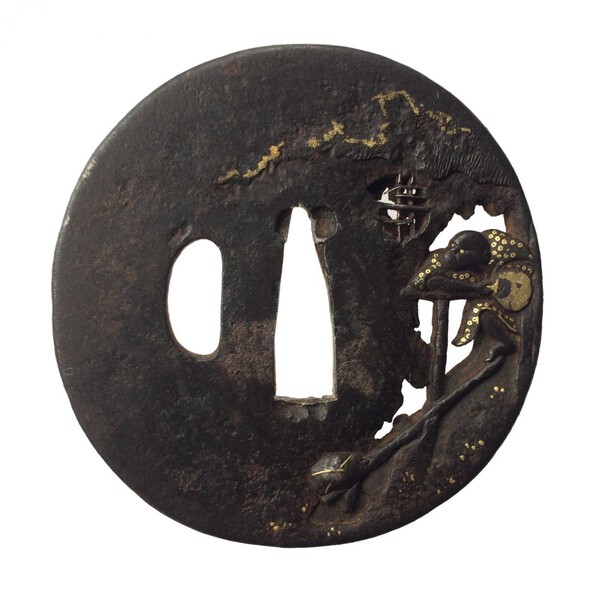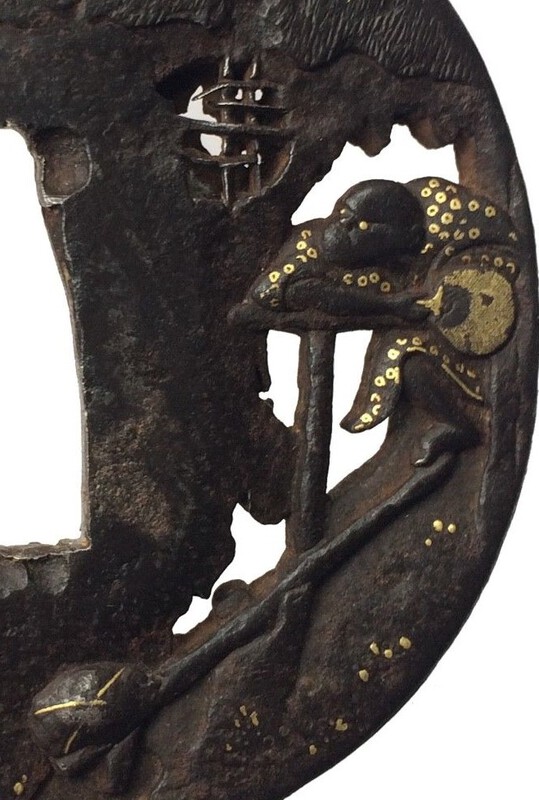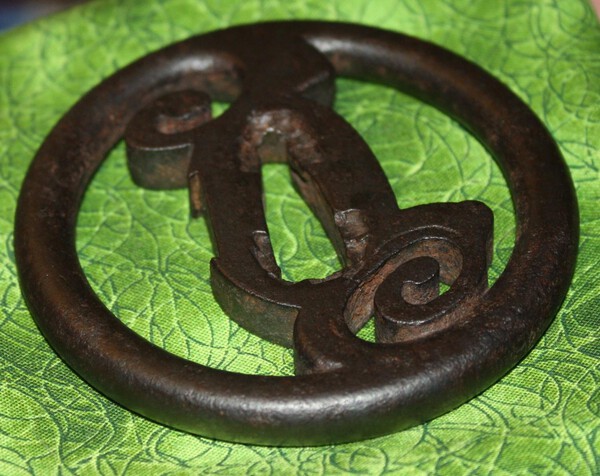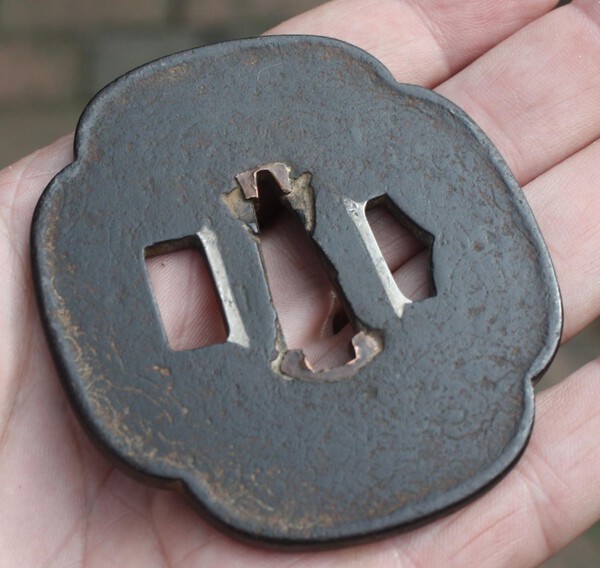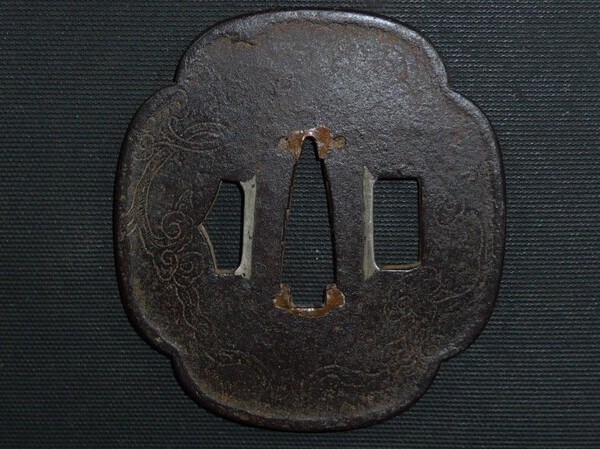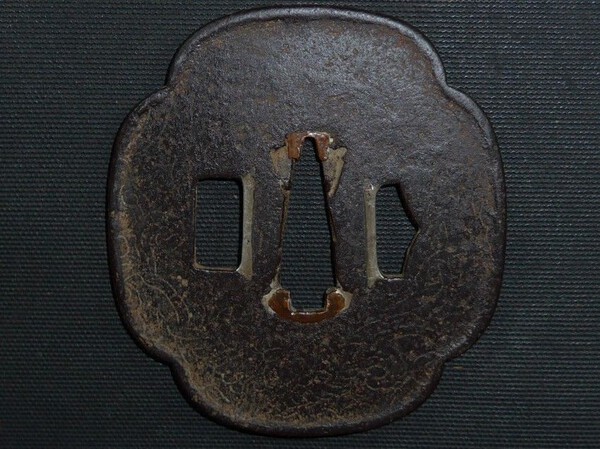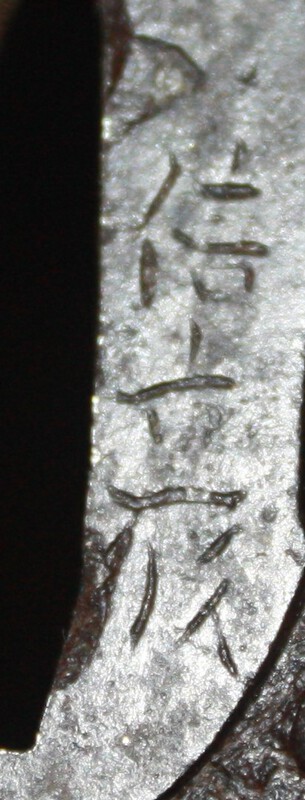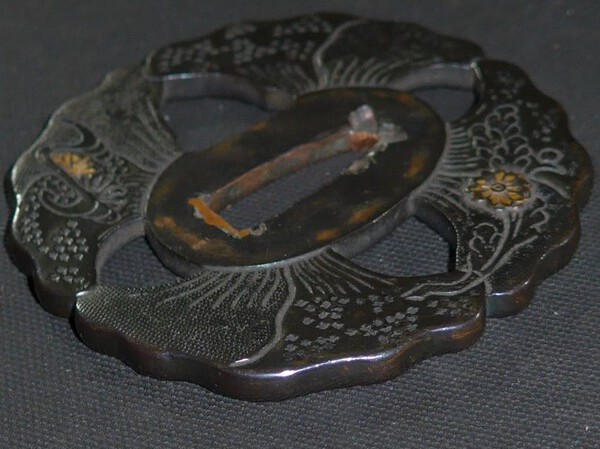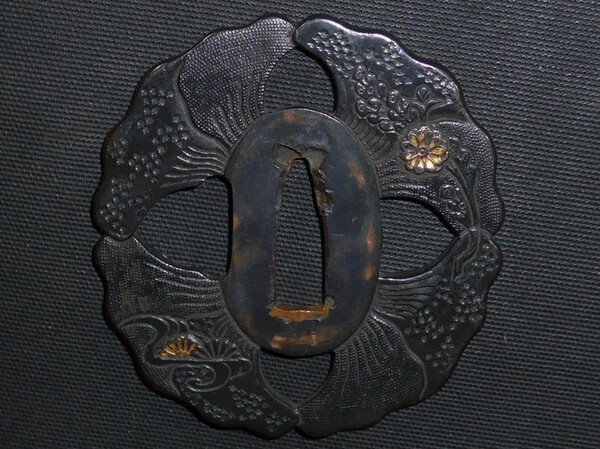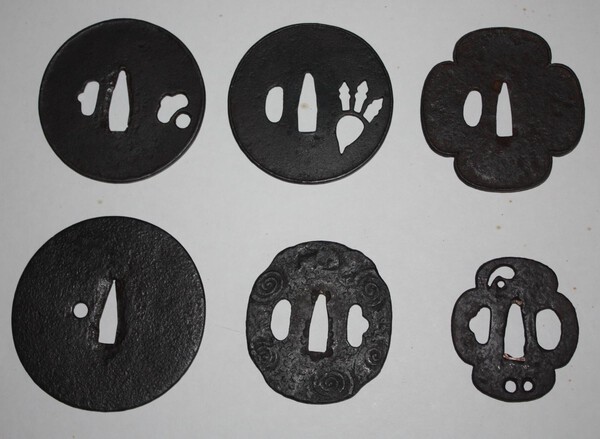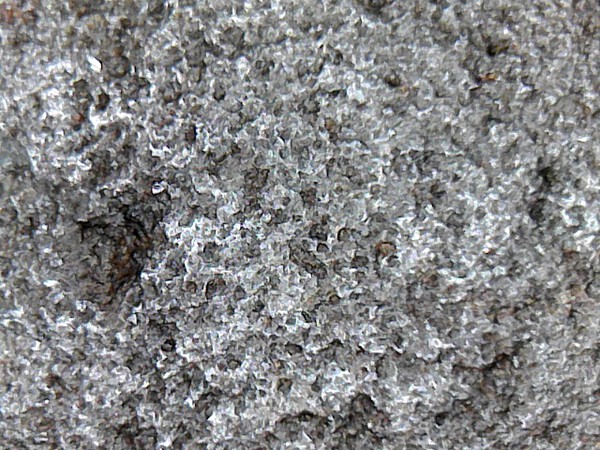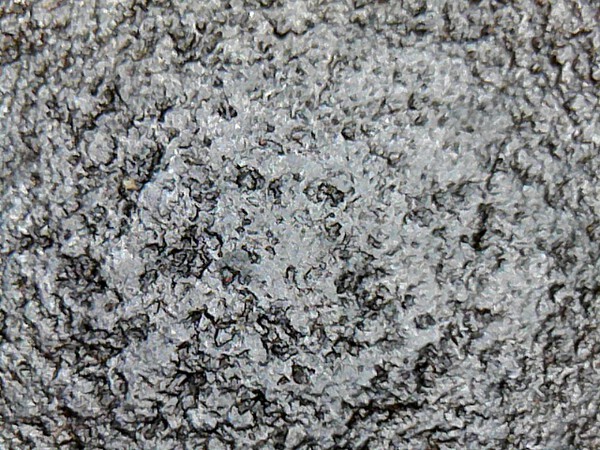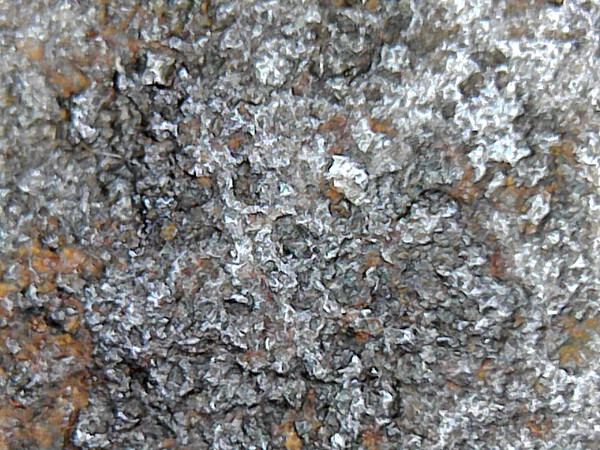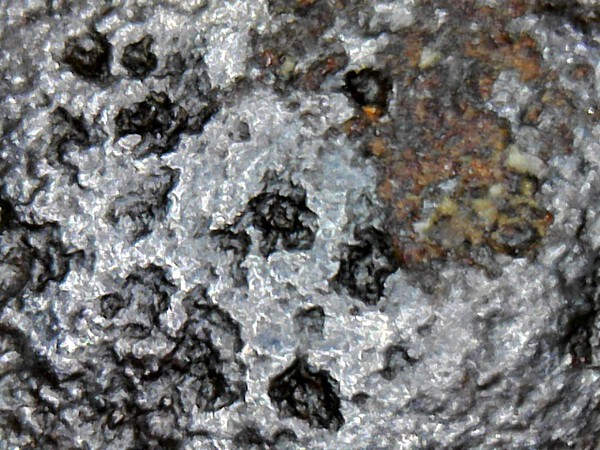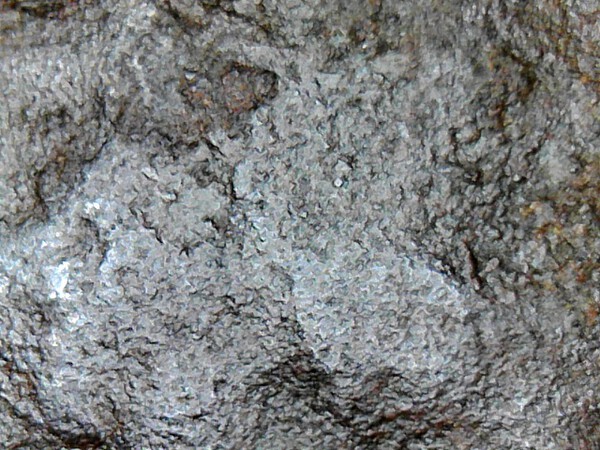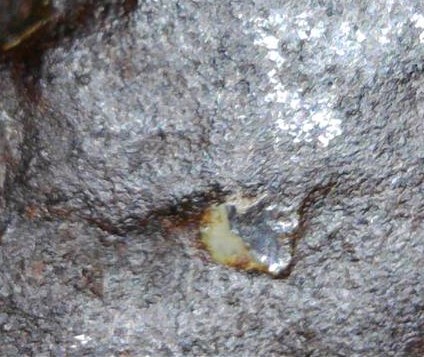-
Posts
290 -
Joined
-
Last visited
Content Type
Profiles
Forums
Events
Store
Downloads
Gallery
Everything posted by johnnyi
-
Thank you both for your great help. I have found a reference, thanks to you Henry for recognizing the potter's wheel, of "Gyogo Bosatsu" "A celebrated Buddhist priest who in 736, headed the deputation sent by the Emporer Shomu to the temple of Amaterasu, in Ise, to pray for the permission of the Goddess to erect at Nara the statue of the Daibutsu." He is also credited with the invention of the potter's wheel. p.s. My apologies to Gyogo Bosatsu for calling him a monkey..
-
Hello. This tsuba (attribution by Mr. Haynes to Ko Nara 1650) is showing a monkey lazily doing something with what looks like a pivoting weighted piece of wood that he moves with his foot. I can't decide if he is pounding grain or steering a boat or something else? (my boat idea seems weak considering the tea house type window above him.) Anyway he seems to be living in a rich man's world judging by his gold decorated attire, but laboring too. Is this a story or parable about something?? I can't find anything in Joley's Legends of Japan, but maybe I'm looking in the wrong place. I'll bet somebody here knows., Thanks Regards, Johni
-
Jean, by "communication not good" do you mean non-existent or do you mean sporadic? Sporadic would be good news. Thanks, John
-
Hello. Does any one know if edoantiques is out of business? I sent them money a week ago and received no reply (although money was "accepted" and despite daily notes to them) and now I find they have been unlisted from ebay also. Thanks for the help. Johni
-
Hi Geraint, Yikes, I glanced too fast, thanks. Great to know "Toshisada" is on Barry's tsuba on the left side, so I guess that tsuba was made by the pupil in the style of his teacher Sanzaemon? regards, John
-
What is written on the left? Johni
-
Thanks Curran, Torigoye is a good book and I have it and have read it, as well as Vol. 1 of the "Classroom", but I wasn't aware that Grev's museum book was available yet. I will order it., Anyway, to the point of my post, it was in relation to Grev's question on whether his two tsuba were Sado Island School. I don't know, and can only restate what Mr. Torigoye has said, and provide another example to view of mid-Edo work. In other words, regarding my previous post please consider it a "bump" Regards, John
-
Hello, I would also like to understand this school a little better and see some early examples. Elliott Long has done some excellent research which can be found on the Shibui Sword site. Briefly, he states that most of the early work you see is the product of Kazariya Katsukage (Sado Sanzaemon Katsukage) who worked on Sado Island 1675-1750. Mr. Long goes on to write that most of these tsuba were in the open work style "of Owari, Akasaka, and Kyo-Sukashi". They were bolder and thicker however. (the pictured tsuba (ex Haynes, Long) measures 8.1 mm thick.) In the 19th century two descendants of Sanzaemon worked on Sado Island mostly in the flat plate style. These two were the first and second Toshisada who we are probably most familiar with due to many of their tsuba being signed. (They also did Mokume). After the Toshidas Mr. Long writes that the style of the school was mostly a more ordinary flat plate. Here is an example of an early work by Sado Sanzaemon Katsukage. As he was exiled to the Island of Sado it is tempting to imagine the freedom of the waves being restricted by a ring of solid iron as an inspiration for this work Kind regards, JohnI
-
Here are a few more pictures which give a pretty accurate color but less detail of the surface "topography". There is not much to be seen where mei might be or have been.
-
Thank you all for your insights. When I return in a few days I'll try to provide better pictures of the mei area. Thanks again. Kind regards, John
-
Forged or cast. what is the tell if there is one? Here are pictures of the tsuba in question. "Chance of it being forged" doesn't count as a "tell" Thanks for the help Regards, John i
-
Thanks Piers, I came to the same conclusion. There is an extra stroke (bottom right) on mine which I am assuming is maybe a son? or minor honorary title? Still very much learning Kind regards, Johnnyi
-
Hello .I believe I see "nobu" but do not know the rest. Thank you for your help Kind regards, John (johnnyi)
-
So would I like to learn and see more; specifically those made before the acid technique of mid 1600's. Regards, Johnnyi
-
Ford, a great help and a wealth of knowledge as always. Yes, "caution" will be remembered too. Thank you. Kind regards, John i
-
Ah, Ford, since you're here, please tell me if you think it is any form of shakudo (please do not feel you must be diplomatic! regards, Johni
-
Still001.bmpStill002.bmpStill003.bmp Richard, I don't have the experience to tell when wear is coming or going, but I've taken some pictures at about 200x which might tell you? The tsuba appears black in hand except for the areas on the seppa dai. Under magnification though it looks entirely different. The first picture is in the area of the tiny dots upper right design. One picture is of the area in the right of seppa dai the last is the tiny dots upper left. Thanks again for your help Kind regards, John
-
Thank you both for your insights. I just looked at it again under the sunshine and there is no hint of either silver or blue; just the reddish copper shining through the seppa dai. My sources for edo things are limited to the internet, but I can't yet find examples of this motif or style. JohnI
-
Although it was offered as "Muromachi Shakudo" I am wondering, as the patina seems very thin? Is there a way to tell shakudo based on the way the patina wears off? (also, if you think this is a newer tsuba please feel free to comment, I just want to know what it is) Thanks, John I p.s. is there a way to clean dirt off a shakudo tsuba without ruining the patina?
-
No, I meant the little ones on the stand. They go up to about 200x and are very cheap. , tekscope for instance and others. john
-
Thanks Christian! Good to see you, even when bearing bad news Regards, John
-
I just discovered these endocscopes for around $80 and they are pretty neat. In trying to discover what the last (Yamakichibei looking) tsuba might be, I took some pictures of some early tsuba from the 1400's and 1500's to try to compare iron. Here are the results: 1) Ko Katchushi 1400's 2) Katchushi radish 1500? 3) Ko Katchushi 1400's 4) Kodachi early 5) "Owari-Nobuiye" 1500-1550 6) Yamakichibei-looking ? Now to send a contribution to Brian for using up so much space. Regards, John
-
Thank you Ford. I've learned "geothite" now. One thing that threw me was the metalic surface over, not under some of the white, as shown here: John


